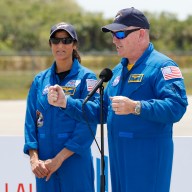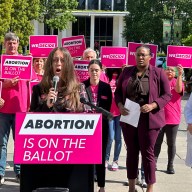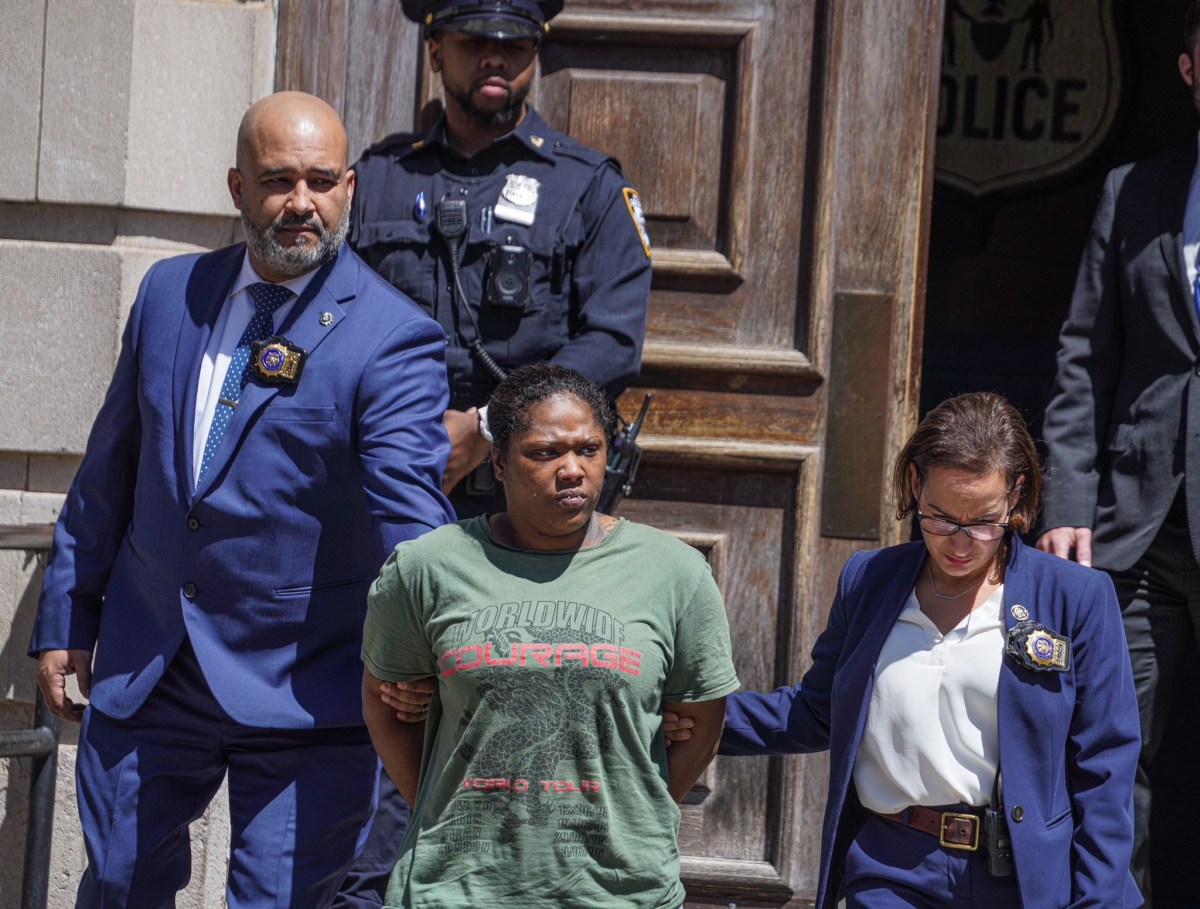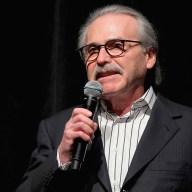When Shelley Saywell was planning her documentary about guns, the authoritative voice of Kiefer Sutherland – TV’s freedom-fighting vigilante, Jack Bauer – kept resonating in her head.
“I kept hearing Kiefer’s voice for some reason,” says the Toronto-born filmmaker.
The “24” star was in Africa last summer shooting “24: Redemption,” the two-hour TV movie that aired in November, when he was contacted by Saywell to narrate “Running Guns: A Journey Into the Small Arms Trade.” The 70-minute documentary airs Sunday at 7:30 p.m. ET on History Television.
The Emmy-winning filmmaker’s previous documentaries have included “Crimes of Honour,” “Kim’s Story: The Road From Vietnam” and “A Child’s Century of War,” which was short-listed for an Academy Award.
Saywell often uses her own voice to narrate her films, which lately have taken place in the world’s deadliest war zones.
“It’s hard to write in the third person when you’ve been to these places,” she says.
Because “Running Guns” was more of an investigative piece, however, she felt she needed a “weightier” voice.
Sutherland – whose series, “24,” is sometimes accused of running up body counts as it dramatizes international terrorism – was closer to Saywell’s story and more in tune with her cause than she even knew. The actor was on location in Africa, shooting scenes dealing with an out-of-control gun culture and exploitation of child soldiers. Although the demands on his time are intense (Sutherland is also an executive producer on the series), he agreed to narrate the project if it could be arranged over the phone.
“I’ve never done that before, but he was such a busy guy and it took weeks to get him,” says Saywell. “He has a big heart.”
Sutherland’s narration throws out some shocking statistics: there is one gun for every 10 people on earth; eight million small arms are manufactured yearly; and every year enough bullets are made to kill every human twice.
Saywell has seen first-hand how small arms have ravaged parts of the world.
“I’ve been making films in conflict zones for years,” she says, “and one film often leads to another.”
She and her small crew have even been held up at gunpoint – twice in Bosnia.
“We were swarmed and forced out of the car with all these people screaming at us and guns going off in the air,” she says. “I was just thinking of two things – let’s get out of here alive and please let me keep my tapes.”
Fortunately, the attackers were only after the crew’s flak jackets, helmets and other protective gear. A few days after one attack, however, she learned some other journalists had been killed in a similar encounter.
As dangerous as it is to cover these conflicts, Saywell says the difference is “we leave. These people are living in this unsafe, hideous environment all their lives.”
The one common denominator in her previous war zone films seemed to be the proliferation of small weapons. Saywell began investigating the small arms industry and discovered that the Russian made AK-47 assault rifles and other guns turned against the civilian population in Bosnia – and which were supposed to be destroyed in a peace treaty – have been recycled to other fractured areas of the world, including Afghanistan and Iraq.
The documentary shows Saywell and her crew confronting small arms marketers at a glitzy trade show, where guns are sold like cars or refrigerators in one of the least regulated trades in the world. Ninety five exhibitors from 45 countries are shown at one European trade show. The film suggests that the illicit small arms trade generates an estimated $4 billion a year.
Saywell was able to sweet-talk some of the key players into on-camera accounts of their deadly business.
“We don’t look like a big NBC camera crew,” she says. “That really serves us well.”
















